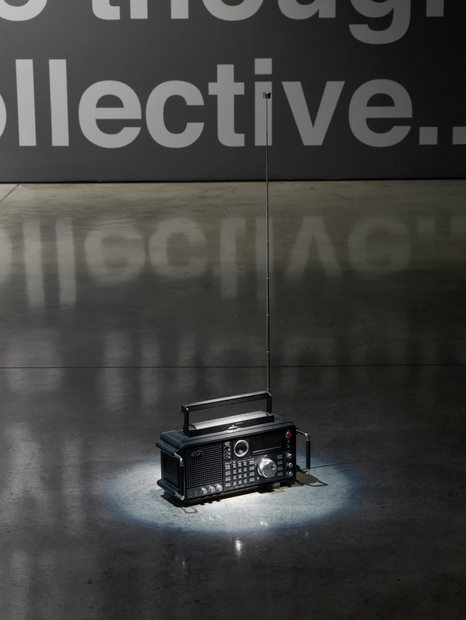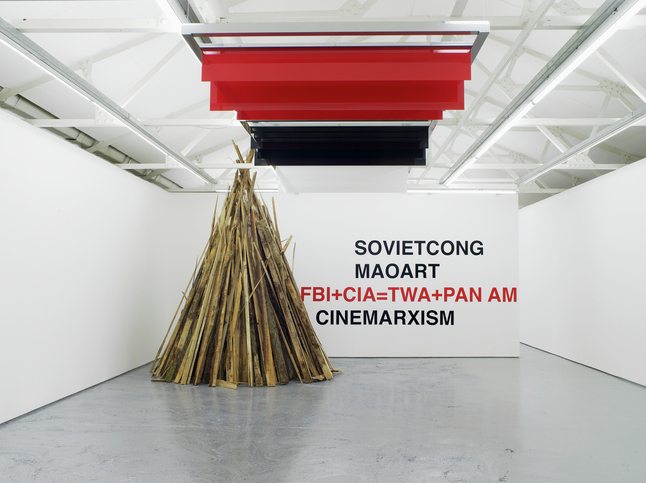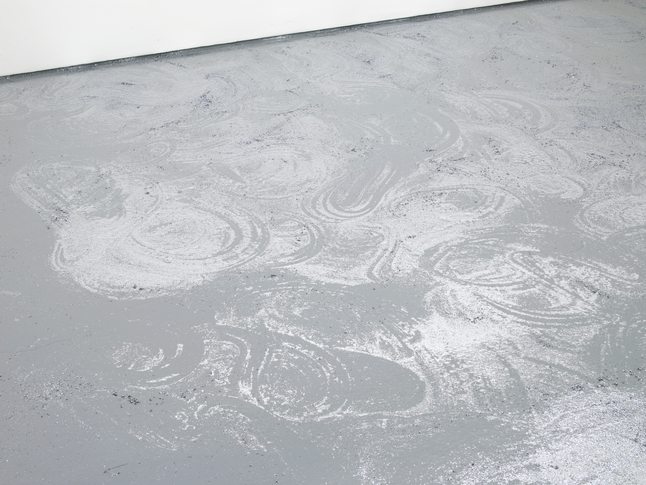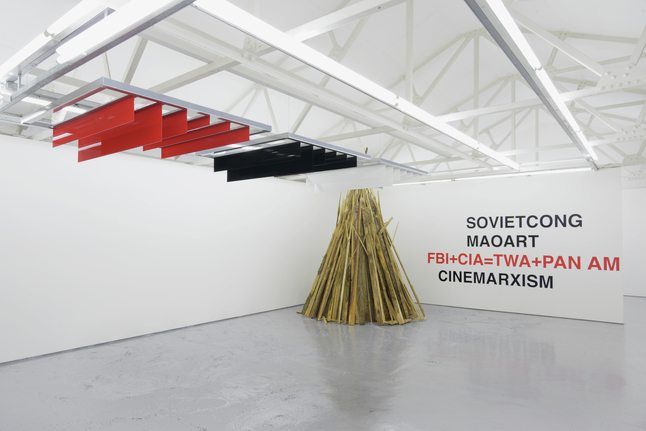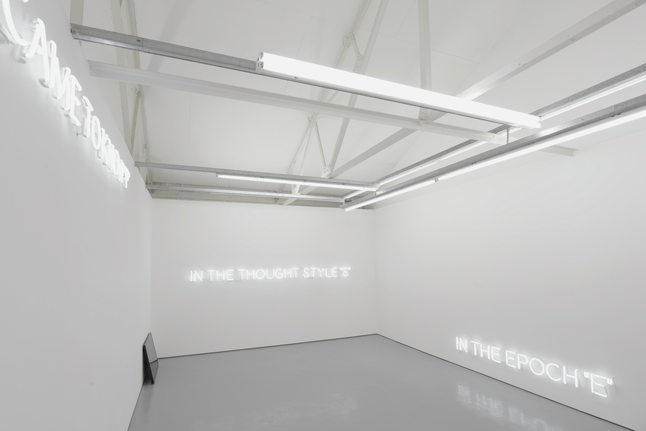Sociological messages, robust lines and economy of expression dominated Liam Gillick’s exhibition at London’s Marueen Paley on Monday night. Born in the 60s in England’s Aylesbury, Gillick’s practice is complex but clean, conceptual but undeniably aesthetically appealing.
Broken down into three separate spaces, the work is held together by a key quote from Ludwik Fleck during the 30s, which concludes as such: ‘What we do think and how we do see depends on the thought-collective to which we belong’. There are threads running throughout the three spaces, feelings of a politicised and occasionally intangible language that feels both cultish and sociopsychological.
The exhibition presents a mix of work from the 90s and present, which all in some way explore the manner in which groups create their ideas, as opposed to individuals. Earlier works were created by the artist when he was part of a collective, and was as such, subject to collective mentality. Later film and sculptural work was created alone.
A broadcast from 1887 on the Subject of Our Time is shown in room 1, a radio recording that was created in 1996, and aimed towards a utopian community. Spotlit on the floor, the radio plays the broadcast at an almost inaudible level. As the viewer—well, listener—you find yourself crouched on the floor beside this small piece of technology, still unable to hear the broadcast above the hum of the surrounding crowds. The power of the object is undeniable.
Alongside the social subject matter, Gillick also happens to be a master of aesthetics. Amongst the vast gallery walls, each impactful work holds a presence that one commonly associates with modernist masterpieces. Whether via the swirling pattern of glitter on the floor When Do We Need More Tractors? Five Plans (1999) or the clinical glow from the white neon X Came to Know P (2015), this is an artist who knows how to command a space—both physically and intellectually.
Liam Gillick: The Thought Style Meets the Thought Collective at Maureen Paley until 22 November. All images ©Liam Gillick, courtesy Maureen Paley, London
